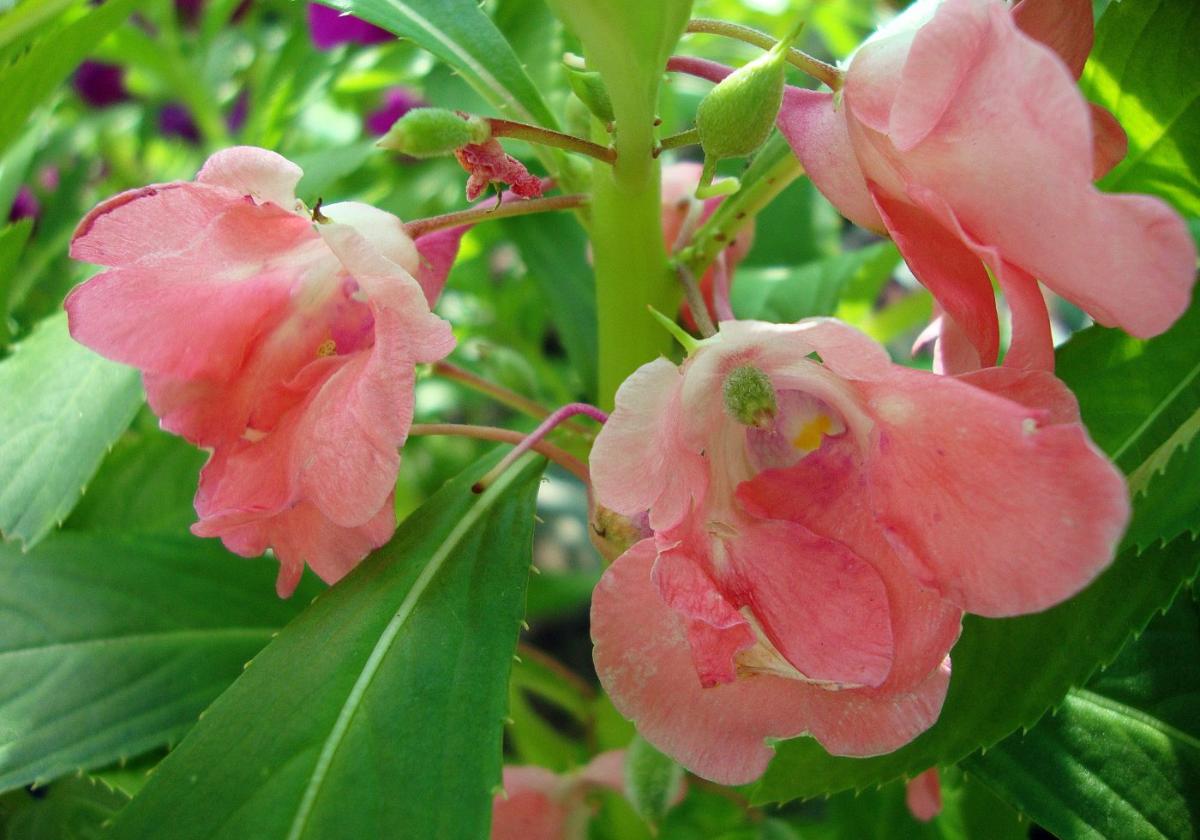Gardening in southern Spain: Impatiens balsamina
The flowers' seed pods open at the slightest touch - inspiring their nickname touch-me-nots as well as the Latin genus, translating to 'impatient'
Denise Bush
Malaga
Friday, 25 July 2025, 11:00
Native to India and Myanmar, Impatiens balsamina is a tender annual with orchid-like blooms in a range of colours. Common names include garden balsam, jewelweed, touch-me-not and camphor plant.
The flowers appear throughout the summer on the stems, near to the leaf axils and are followed by fuzzy seed pods that, when ripe, burst open at the slightest touch, spreading the seeds far and wide. This is why it is called touch-me-not and also is believed to be the origin of the genus name, 'impatiens', coming from the Latin meaning 'impatient'. The seeds need light to germinate and can take over the garden. However, Impatiens balsamina is such a pretty plant it's hard not to encourage it to spread.
The flowers come in shades of red, from scarlet through to the palest pink as well as purple and white and there are also some double cultivars.
The leaves are lanceolate and bright green and sometimes hide the blooms. This can be rectified by picking a few off. The plants tend to be stocky and branching so don't need pinching back although this can be done to increase flowering. Dead-heading is important to prolong the flowering period and to prevent self-seeding.
The flowers were traditionally used to adorn the ears of young women (hence jewelweed) and also to dye fingernails (and hair) orange and red. Parts of the plant were ingested to increase circulation and relieve pain and the leaves were made into a poultice to treat skin ailments. In the US the leaves are believed to be one of the few natural cures for poison ivy rashes.

Comentar es una ventaja exclusiva para registrados
¿Ya eres registrado?
Inicia sesiónNecesitas ser suscriptor para poder responder.
Necesitas ser suscriptor para poder votar.